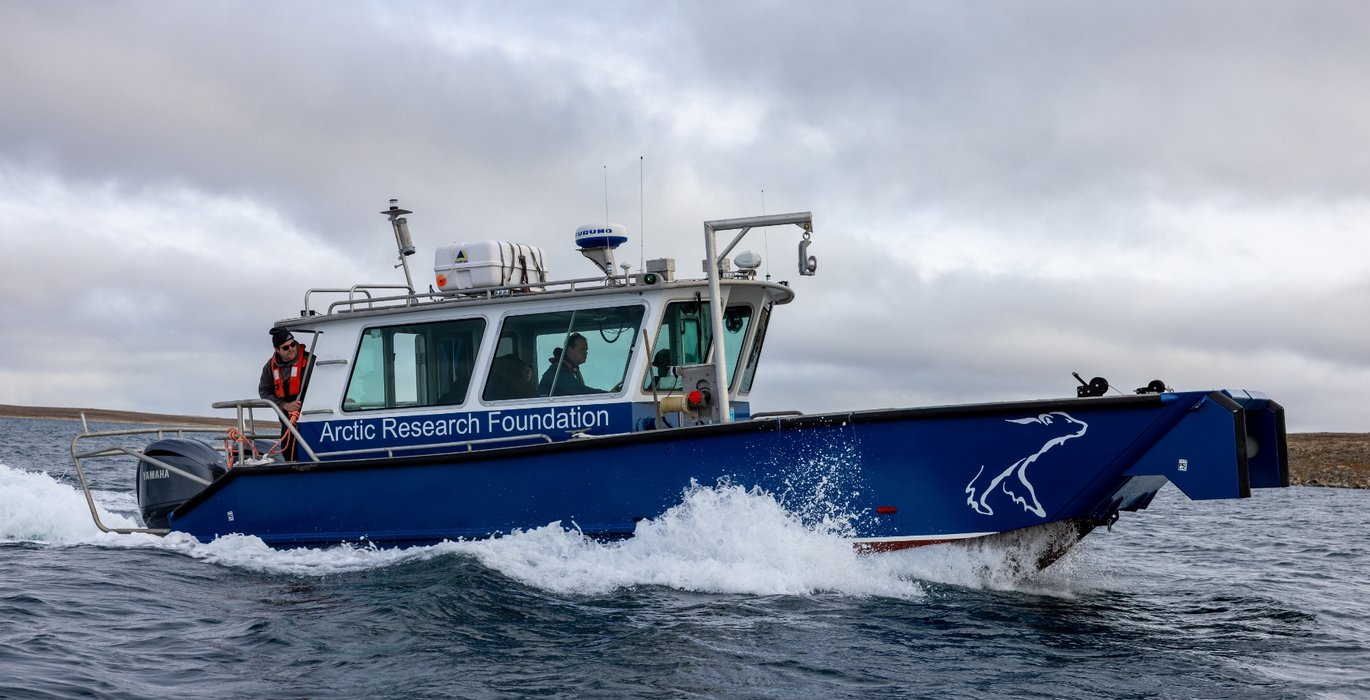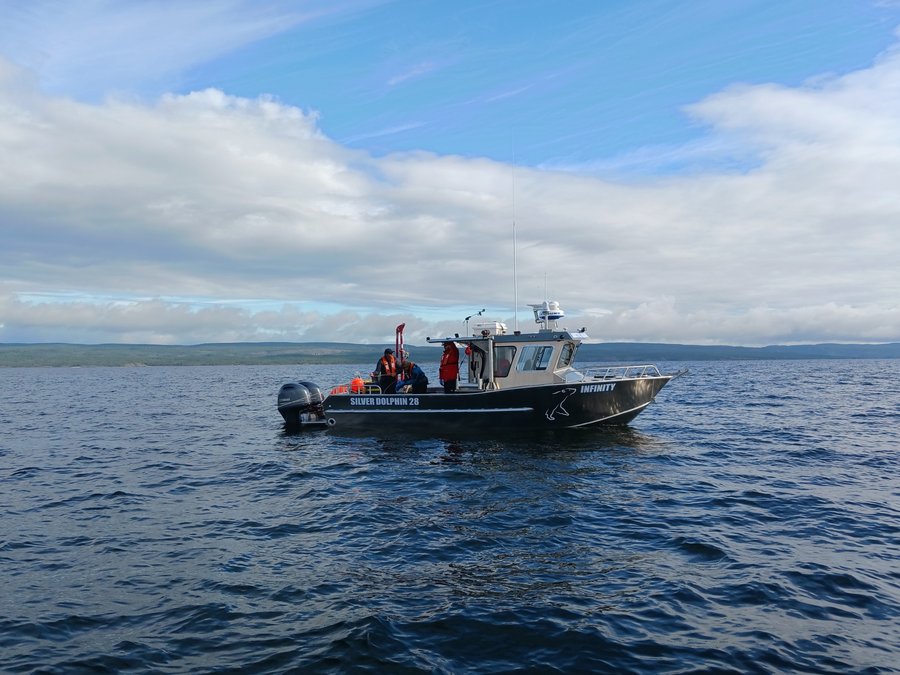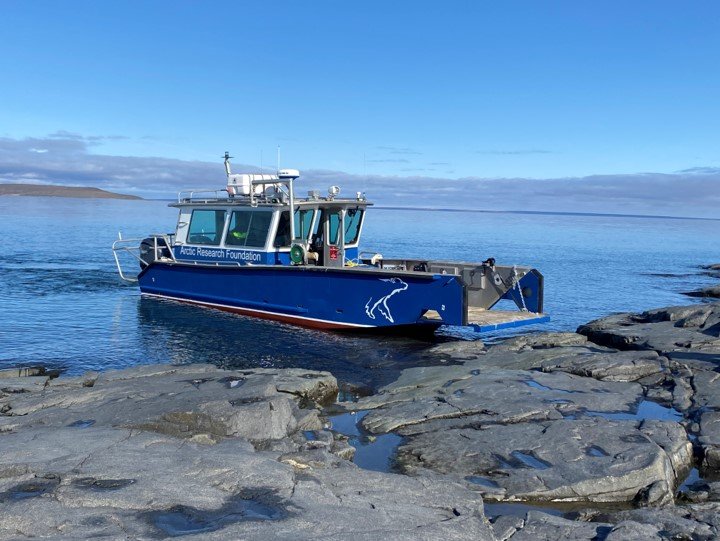
July 24, 2025
The Arctic Research Foundation (ARF) recently invited community members to help name two new vessels in its fleet — the R/V Skoden (formerly Silver Dolphin) in Great Slave Lake and R/V Blue Nanook (formerly GSL Landing Craft based in Cambridge Bay. The goal was to highlight and honour local voices from the communities these boats will serve.
“ARF exists to support Northern communities, and our ships are one of the most impactful platforms we use for this work,” said Tom Henheffer, ARF CEO.
The contest was open to community members in the Great Slave Lake area, Northwest Territories (NWT) and Cambridge Bay, Nunavut. Residents were invited to suggest short, easy-to-pronounce names for two vessels serving their regions.
“We are committed to ensuring Indigenous Northerners remain fully engaged partners in the work on their waters, and their choosing the names of ARF ships is an important step that helps strengthen these relationships,” stated Henheffer.

R/V Skoden, formerly known as the Silver Dolphin.
Katrina Nokleby, a community member from Yellowknife, saw the notice to name the Silver Dolphin and called on a few friends to come up with some ideas. She wanted the name to be significant to the area while also showing the cheeky side of the Territories’ sense of humour.
“We wanted to come up with a great name to show off the local sense of humour,” Nokleby said. “That’s how we came up with SKODEN.”
Now known as R/V Skoden, this 8.23-metre aluminum vessel cruises comfortably at 25 knots and carries up to 400 litres of fuel. It accommodates six people and has a 4,000-pound carrying capacity, a working deck, twin 175 hp outboard engines, SSB and VHF radios, a satellite phone, and Starlink internet.
Not wanting a traditional vessel name or anything that had been used before, Nokleby threw the name out there and hoped for the best. Her friends all laughed at her entry, understanding the tongue-in-cheek reference.
According to Nokleby, Skoden, a local slang term meaning ‘Let’s go then,’ is a play on words and was intended to sound “old and historical.” She also wanted it to bring smiles to locals’ faces every time they saw it.
“I was pretty happy and excited to win,” Nokleby said. “It’s nice to have some sort of impact in the community.”
R/V SKODEN will be recognized in the area of Great Slave Lake for its research and community work. Locals can enjoy seeing the name as they watch it come and go — bringing a smile or a chuckle as it helps the region thrive.
"We couldn’t be more thrilled with the choice community members have made."
Adrian Angulalik, who lives in Cambridge Bay, saw the call for nominations to name the landing craft on Facebook. He was used to seeing the boats in the bay and was impressed by the vessel’s natural aesthetic. Its commanding presence gives a strong sense of security on the water, making it stand out from the others.
When he saw how social media was humming with ideas about what to name the vessel, its long, lean, and sleek shape — which reminded him of a polar bear gliding through water — inspired his idea for a name.
He submitted the winning name, Blue Nanook (Nanook means Polar Bear in Inuktitut).
“I was super inspired by the colour,” Angulalik said. “And the shape is great too.”
The 10-metre-long boat has a 10-foot breadth and a cruising speed of 22 knots. It also has a 10 by 9 foot workable deck and fuel capacity of 458 litres. It features a bow ramp that allows for easy access to the shore, and the heated cabin can comfortably accommodate up to six people.
The vessel’s indoor workspace is powered by a 115 VAC generator that supports the radar, plotter, sounder, GPS, and VHF radio. It’s also equipped with a private flushable washroom. Designed for versatility, the vessel has been used to transport people, vehicles, and equipment.

R/V Blue Nanook, formerly known as the Landing Craft, features a bow ramp that allows for easy access to the shore.
The vessel’s indoor workspace is powered by a 115 VAC generator that supports the radar, plotter, sounder, GPS, and VHF radio. It’s also equipped with a private flushable washroom. Designed for versatility, the vessel has been used to transport people, vehicles, and equipment.
Angulalik is extremely proud and happy to have been part of the process of naming the vessel, and he’s pleased that it will be a new resource for Cambridge Bay.
“I’m super excited for Cam Bay,” he said. “And I’m going to buy myself some real good food with the winnings.”
Like Angulaik, the Arctic Research Foundation takes great pride in the winning names selected through the community-led boat naming competitions.
“Skoden and Blue Nanook make excellent vessel names while being strong representations of the languages and dialects spoken around Great Slave Lake and in Cambridge Bay,” Henheffer added, “and we couldn’t be more thrilled with the choice community members have made."





